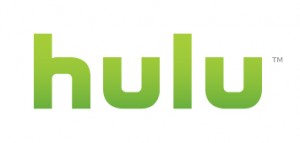Twitter Just TKO'ed Bit.ly with t.co
Twitter is on a warpath and the casualties are counting.
iPhone apps? Twitter bought the best one, Tweetie (and they recently released their own official apps for BlackBerry and Android).
URL shortening? Twitter gave rise to bit.ly and now they just cemented its downfall.
A better web client and built-in picture support? The smart money says it’s coming, and Seesmic, TwitPic, and others should be scared.
Back in the Good Ol’ Days
TinyURL launched in 2002, but didn’t gain widespread appeal until Twitter adopted it as its official URL shortener. Back then (2006-2009ish), Twitter had nary a concern for money. They were focused on building the best service possible (or at least one that didn’t go down every other minute) and welcomed an ecosystem of outside apps and services built on top of the basic Twitter platform. This dichotomy worked out beautifully: Twitter wanted to grow and scale, and they basically got free outside help.
Back then, it was actually in Twitter’s own interest to avoid monetizing the service. As the anecdote goes, you don’t know what a company’s worth until it starts making money. That is, without ads or paid subscriptions, Twitter’s earning potential seems limitless. Seem counterintuitive? Perhaps at first. Basically, once a company starts making money, by implementing ads or charging for premium services, investors start realizing just how much — or how little — a company is truly capable of making. But until that point, everyone can still dream of fistfuls of cash just dropping from the sky.
However, the honeymoon can’t last forever. Now, with investors presumably breathing down their necks and Twitter becoming a true pop culture phenomenon (the Oprah moment!), Twitter needs to start figuring out how to pay off investors and become a financially successful company with plans for an IPO down the line.
In Pursuit of Money
Make no mistake, all of Twitter’s recent changes are a result of the company “growing up” and preparing to launch its advertising platform. Without controlling how the end-user views tweets, it becomes impossible to guarantee the wide dissemination of Twitter’s own advertising platform (that is, without hijacking the Twitter stream with spammy and unimaginative advertising tweets, now explicitly prohibited by Twitter’s recently revised Terms of Service).
Twitter bought Tweetie and rebranded it Twitter for iPhone because it was, by far, the best mobile client available. Creating its own app from scratch would’ve required significant effort and expenditure and many power users may have stuck with Tweetie anyways if they believed it to be better. By adopting the best client as its own, Twitter guaranteed widespread initial acceptance.
In contrast, Bit.ly picked up steam on its own, but only went mainstream after Twitter started using it as the default shortener on Twitter.com. Power users liked it because it provided analytics and, more recently, branded URLs for its Pro service users (such as TechCrunch’s tcrn.ch or the New York Times’ nyti.ms). However, with Twitter’s impending t.co shortening service, Bit.ly will lose its most valuable asset: prominent placement on Twitter.com
In short, URL shortening services went viral, but only because they helped users maximize the utility of Twitter’s infamous 140 characters limit. If Twitter now allows full URLs in tweets, why would anyone bother using a URL shortener?
Without Twitter, can a URL shortening service still be a viable (and profitable) company? If Facebook’s copy-rather-than-acquire precedent is any model, competing services are going to have a tough time.
Will Bit.ly Get Rocky Balboa’ed or Can It Bounce Back?
Now, the onus is on Bit.ly to innovate or die. They have already begun offering some premium services, but they need to go much farther.
I suspect they will need to shift some of their focus from their core business (short domains) to other ancillary services, like small landing pages for consumers or a full-fledged analytics service for microblogging services (like Tumblr and Posterous, in addition to Twitter).
Or they can just hope Google acquires them.
What do you think – can Bit.ly survive this onslaught from Twitter or are they just a feature, not a company?
[photo credit: flickr/mdverde]

